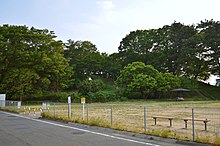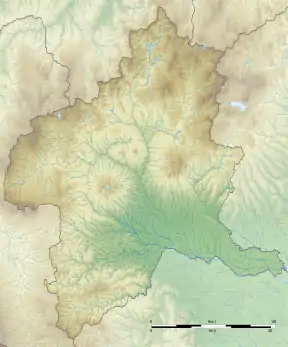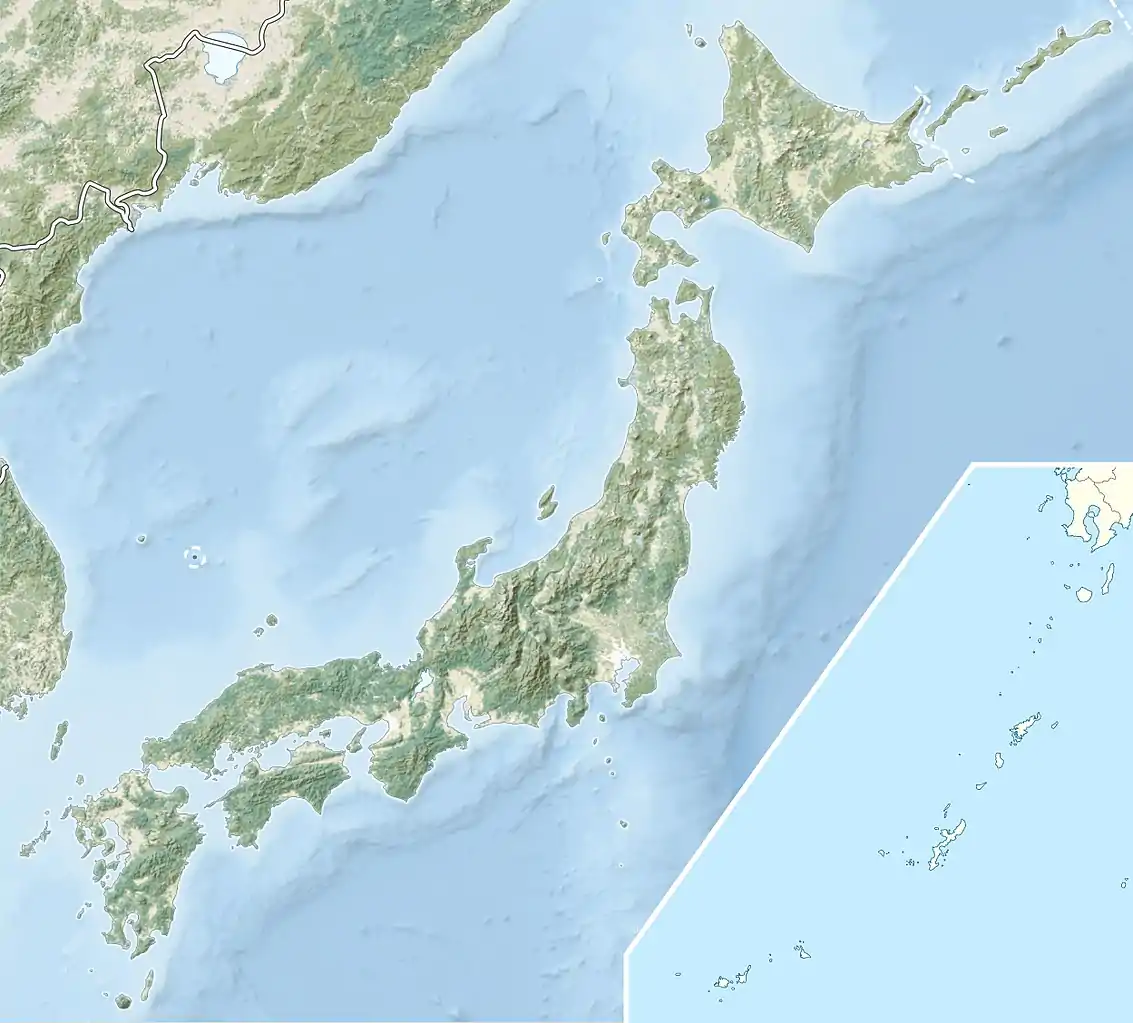Maebashi Futagoyama Kofun
Maebashi Futagoyama Kofun (前橋二子山古墳) is a Kofun period keyhole-shaped burial mound located in what is now the city of Maebashi, Gunma Prefecture in the northern Kantō region of Japan. It was designated a National Historic Site of Japan in 1927.[1] It is also sometimes referred to as the Amagawa-Futagoyama Kofun (天川二子山古墳).
前橋二子山古墳 | |
 Maebashi Futagoyama Kofun | |
 Maebashi Futagoyama Kofun  Maebashi Futagoyama Kofun (Japan) | |
| Location | Maebashi, Gunma, Japan |
|---|---|
| Region | Kantō region |
| Coordinates | 36°24′41″N 139°2′5.3″E |
| Type | kofun |
| History | |
| Founded | late 6th century |
| Periods | Kofun period |
| Site notes | |
| Public access | Yes (Park) |
Overview
The Maebashi Futagoyama Kofun is located at the eastern edge of the Maebashi Plain, and is one of a cluster of kofun tumuli in the area. It has a total length of 104 meters and was built in two tiers, orientated to the northwest. The surface was originally covered in fukiishi with rows of cylindrical haniwa. Unusually, the width of the rectangular portion is larger its length. The remains of a 35-meter moat were discovered in 1980, and an analysis of the soil covering the moat found that it contained volcanic ash from an eruption which occurred in the middle of the 6th century, indicating that the tumulus was built around the start of the sixth century. Although the detailed structure of the mound has not been investigated yet, it is believed that the burial chamber was opened in antiquity and has since collapsed.
- Overall length: 104 meters
- Posterior circular portion: 72 meter diameter x 11 meters high
- Anterior rectangular portion: 76 meters wide x 9.5 meters high
References
- "二子山古墳" (in Japanese). Agency for Cultural Affairs. Retrieved August 20, 2020.
External links
| Wikimedia Commons has media related to Maebashi-futagoyama-kofun. |
- Maebashi City official guide (in Japanese)